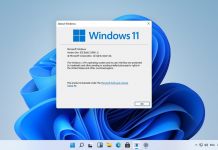The move will bolster the company’s Always Connected Windows on ARM offering, which is yet to take off in a significant way. Part of user’s hesitation comes from the questionable performance of Windows apps on mobile processors like the Snapdragon 835, and this should help somewhat. Windows 10 on ARM uses emulation for x86 apps, which isn’t ideal. It comes with notable performance decreases and isn’t great for productivity. Native 64-bit support should mean much better performance and the ability to compete more directly with Intel processors. It slots in with the launch of the first devices with the Snapdragon 850, which is designed specifically for laptops. Together, these releases could form a strong case for Windows 10 ARM, which allows LTE connectivity and multi-day battery life.
Developer Support is Everything
However, Microsoft once requires support from developers, which hasn’t always worked out in the past. Many big apps are yet to go UWP, for example, and Windows 10 Mobile had a major shortage. The company is also yet to release first-party hardware with ARM processors. Its recent Surface devices have still used Intel chips, signalling that it isn’t quite ready to commit itself. Whatever the case, developers can easily recompile apps using the newly released Visual Studio 15.9. “With new Windows 10 on ARM devices sporting more powerful processors, the ARM64 platform continues to mature and improve,” said Marc Sweetgall, senior program manager, Windows kernel. “The release of Visual Studio 15.9 continues that evolution, and we can’t wait to see what amazing experiences developers can produce using these tools.”




